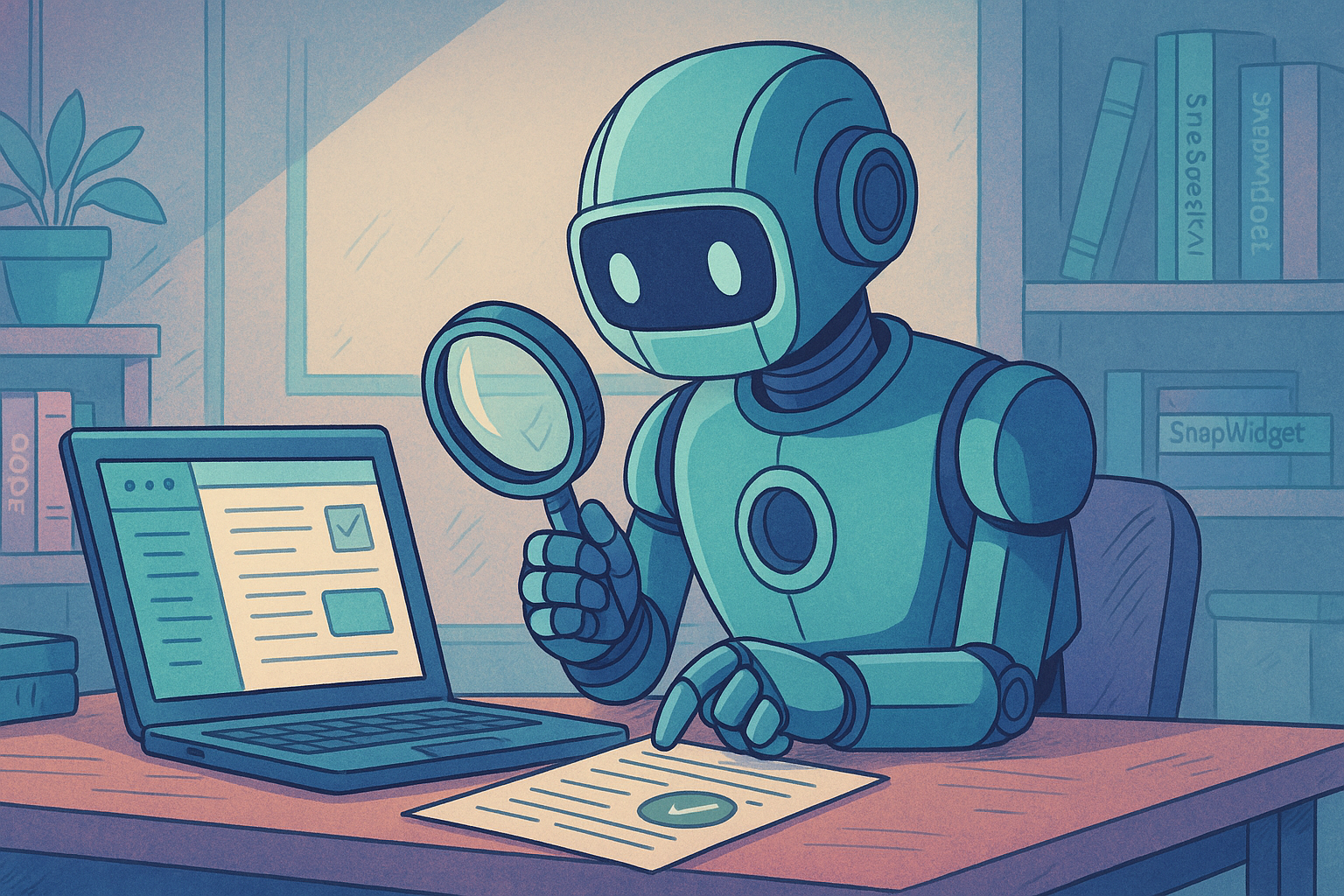Mastering Undetectable AI Content: Techniques and Tools


The Quest for Undetectable AI Content
In the ever-evolving landscape of content creation, the ability to produce high-quality, undetectable AI-generated articles has become a valuable skill. This comprehensive guide will explore various techniques and tools for creating AI content that can pass detection tests with flying colors.
Why Undetectable AI Content Matters
The importance of creating undetectable AI content stems from several factors:
-
Content Generation at Scale: With undetectable AI articles, you can produce large volumes of content quickly and efficiently.
-
Traffic Generation: High-quality AI content can help drive significant traffic to your website.
-
Monetization Opportunities: Increased traffic can lead to better monetization through ads or conversions.
-
Staying Compliant: As search engines refine their policies on AI-generated content, ensuring your content appears human-written becomes crucial.
Testing AI Detection Tools
To establish a baseline for our experiments, we'll use three popular AI detection tools:
- Originality.ai (paid tool)
- aicheatsheet.com (free tool)
- OpenAI's AI Text Classifier
Baseline Test Results
We generated three test articles using OpenAI's playground on the following topics:
- "My Big Trouble in Little China" is a better movie than "Top Gun"
- Why rollerblading is dead
- Proper form for bench press
Here are the initial detection results:
| Article | Originality.ai | AI Cheat Sheet | OpenAI Classifier |
|---|---|---|---|
| 1 | 98% AI | 100% AI | Unlikely AI |
| 2 | 4% AI | 100% AI | Unclear |
| 3 | 99% AI | 1% AI | Unclear |
These results show inconsistencies across the tools, with OpenAI's classifier performing particularly poorly.
Techniques for Creating Undetectable AI Content
Let's explore various methods to improve the "human-like" quality of AI-generated content.
1. QuillBot Rewriting
QuillBot is a popular paraphrasing tool that can help rewrite AI-generated content.
Results:
- Effective for highly detectable content
- May worsen results for content already passing detection tests
- Requires a paid account for longer texts
2. Perplexity and Burstiness Prompt
This technique involves using a specific prompt to instruct the AI to write with greater complexity and sentence variation.
Results:
- Inconsistent performance across test cases
- Improved some detection scores but worsened others
3. Human-like Writing Prompt
This method uses a prompt instructing the AI to write like a human blogger giving advice.
Results:
- Mixed performance across test cases
- Effective for some content types but not others
4. AI Self-Improvement
This technique involves asking the AI itself how to write undetectable content.
Results:
- More consistent performance across test cases
- Showed promise as a reliable method
5. AI Content Rewriting
This method generates content normally, then asks the AI to rewrite it to avoid detection.
Results:
- Best performing technique among simple pre-training exercises
- Consistently good scores across all detection tools
6. Surfer AI Tool
Surfer's upcoming AI tool generates SEO-optimized content based on top-ranking articles.
Results:
- Outperformed all other techniques
- Consistently low detection rates across tools
- Promising for creating undetectable, SEO-friendly content
7. Emoji Trick
This method involves inserting emojis after each word, then removing them.
Results:
- Inconsistent performance
- Not reliable enough for regular use
8. Comma Trick
This technique involves removing as many commas as possible from the generated content.
Results:
- Inconsistent performance
- Not recommended as a reliable method
Top Performing Techniques
Based on our tests, the most effective methods for creating undetectable AI content are:
- Surfer AI Tool
- AI Content Rewriting
- AI Self-Improvement Prompt
Google's Stance on AI-Generated Content
Google's position on AI-generated content has evolved over time:
- April 2022: Google initially stated that AI-generated content was against their guidelines.
- February 2023: Google released an official statement indicating they would reward high-quality content regardless of how it's produced.
However, the key focus remains on creating content for humans rather than search engines. Google aims to incentivize the creation of original, high-quality content.
The Future of AI Content in SEO
As AI technology continues to advance, the line between human-written and AI-generated content may become increasingly blurred. However, it's likely that Google will continue to prioritize unique, high-quality content that provides value to users.
Dave Gibbons, a successful SEO professional, theorizes that Google will treat AI-generated content similarly to plagiarism or duplicate content. While it may be allowed, it could be considered lower quality compared to unique content with equivalent SEO factors.
Best Practices for Using AI in Content Creation
To effectively use AI in your content strategy while staying on the right side of search engine guidelines, consider the following best practices:
-
Focus on Quality: Prioritize creating valuable, informative content that serves your audience's needs.
-
Use AI as a Tool, Not a Replacement: Leverage AI to assist in content creation, but don't rely on it entirely.
-
Customize and Edit: Always review, edit, and customize AI-generated content to ensure it aligns with your brand voice and adds unique value.
-
Combine AI with Human Expertise: Use AI to generate ideas or rough drafts, then have human writers refine and expand on the content.
-
Stay Informed: Keep up with the latest developments in AI technology and search engine guidelines to adapt your strategy accordingly.
-
Diversify Your Content: Mix AI-generated content with entirely human-written pieces to maintain a balance.
-
Optimize for User Intent: Ensure your content, whether AI-generated or not, addresses user needs and search intent effectively.
-
Implement Proper Citations: When using AI to gather information, always verify sources and provide proper citations.
-
Continuously Test and Refine: Regularly assess the performance of your AI-generated content and refine your approach based on results.
-
Transparency: Consider being transparent about your use of AI in content creation if it aligns with your brand values and audience expectations.
The Role of AI in Future Content Creation
As AI technology continues to evolve, its role in content creation is likely to expand. However, the key to success will be finding the right balance between leveraging AI capabilities and maintaining the human touch that resonates with audiences.
Some potential future developments in AI content creation include:
-
More Sophisticated Language Models: AI models will become increasingly adept at mimicking human writing styles and producing more nuanced content.
-
Improved Content Personalization: AI could enable hyper-personalized content creation tailored to individual user preferences and behaviors.
-
Enhanced Multilingual Capabilities: AI may facilitate easier creation of high-quality content in multiple languages, breaking down language barriers.
-
Integration with Other Technologies: AI content creation tools may integrate more seamlessly with other marketing and SEO technologies for a more holistic approach.
-
Ethical AI Content Creation: As concerns about AI ethics grow, we may see the development of more transparent and ethically-focused AI content creation tools.
Conclusion
Creating undetectable AI content is a valuable skill in today's digital landscape. By leveraging the right techniques and tools, it's possible to produce high-quality, AI-generated content that passes detection tests and provides value to your audience.
However, it's crucial to remember that the ultimate goal should always be to create content that serves your users' needs and aligns with search engine guidelines. As AI technology continues to evolve, staying informed and adaptable will be key to maintaining a successful content strategy.
Whether you choose to use AI as a primary content creation tool or as a supplementary aid, the focus should remain on producing valuable, original content that engages your audience and helps achieve your business objectives. By striking the right balance between AI efficiency and human creativity, you can harness the power of AI to enhance your content creation process while maintaining the quality and authenticity that users and search engines value.
More from the blog

Fine-tuning your custom ChatGPT chatbot
Finetuning your custom chatbot is a crucial step in ensuring that it can answer your visitors questions correctly and with the best possible information.

Herman Schutte
Founder

How AI Chatbots Can Save You 100s Of Hours In Customer Support
Dive into the transformative power of AI chatbots in customer support. Learn how businesses can save significant time and enhance customer satisfaction, with a look at tools like SiteSpeakAI.

Herman Schutte
Founder